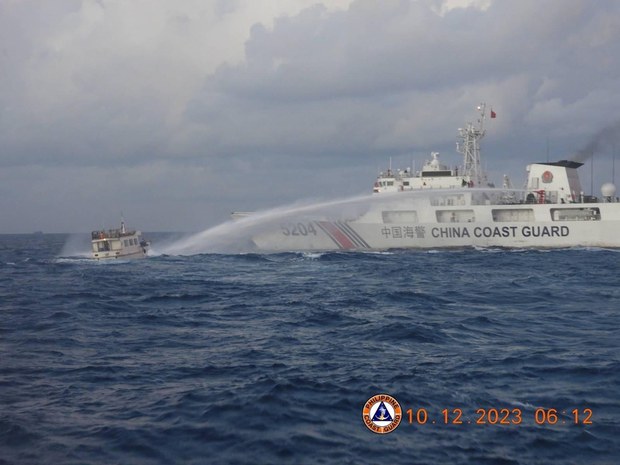Manila reports that a Chinese vessel made contact with a Filipino ship and one soldier lost a thumb in the ensuing sword fight
America’s top diplomat reaffirmed the US commitment to a mutual defense pact with the Philippines after a Chinese vessel rammed a Filipino ship in the South China Sea. Tensions between the People’s Republic and Manila have escalated as the Philippines has increased military ties with the US.
The Philippines military reported that on Monday, a Chinese craft rammed a Philippine ship in an area of the South China Sea claimed by both Beijing and Manila. The Philippine army claimed the Chinese army attacked with swords and knives while its soldiers were unarmed. One Filippino lost a thumb in the exchange.
US Ambassador to the Philippines MaryKay Carlson immediately denounced Beijing for the incident. In a post on X, she blamed China for “aggressive, dangerous maneuvers near Ayungin (Second Thomas) Shoal, which caused bodily injury, damaged Philippine vessels, and hindered lawful maritime operations.”
On Wednesday, Secretary of State Antony Blinken held a call with Philippine Foreign Secretary Enrique Manalo on the matter. According to a State Department readout of the call, Blinken said China’s actions “undermine regional peace and stability and underscored the United States’ ironclad commitments to the Philippines under our Mutual Defense Treaty.”
Throughout the Biden administration, top US officials have invoked the 1953 US-Philippines Mutual Defense Treaty as a warning to China to back off from territorial disputes with Manila.
Tensions between Manila and Beijing in the South China Sea have escalated since Philippine President Ferdinand Marcos Jr. took office two years ago. He has since increased military ties with the US.
Recently, the US deployed a Typhon launcher – a covert system that is concealed in a 40-foot shipping container and fires Tomahawk and SM-6 missiles – to the Philippines for war games. Chinese Defense Ministry spokesman Wu Qian said the deployment increased the risk of conflict.
“The United States and Philippine practices put the entire region under the fire of the United States (and) brought huge risks of war into the region,” Wu added. “Intermediate-range missiles are strategic and offensive weapons with a strong Cold War color.”
Reprint from Antiwar.com
































